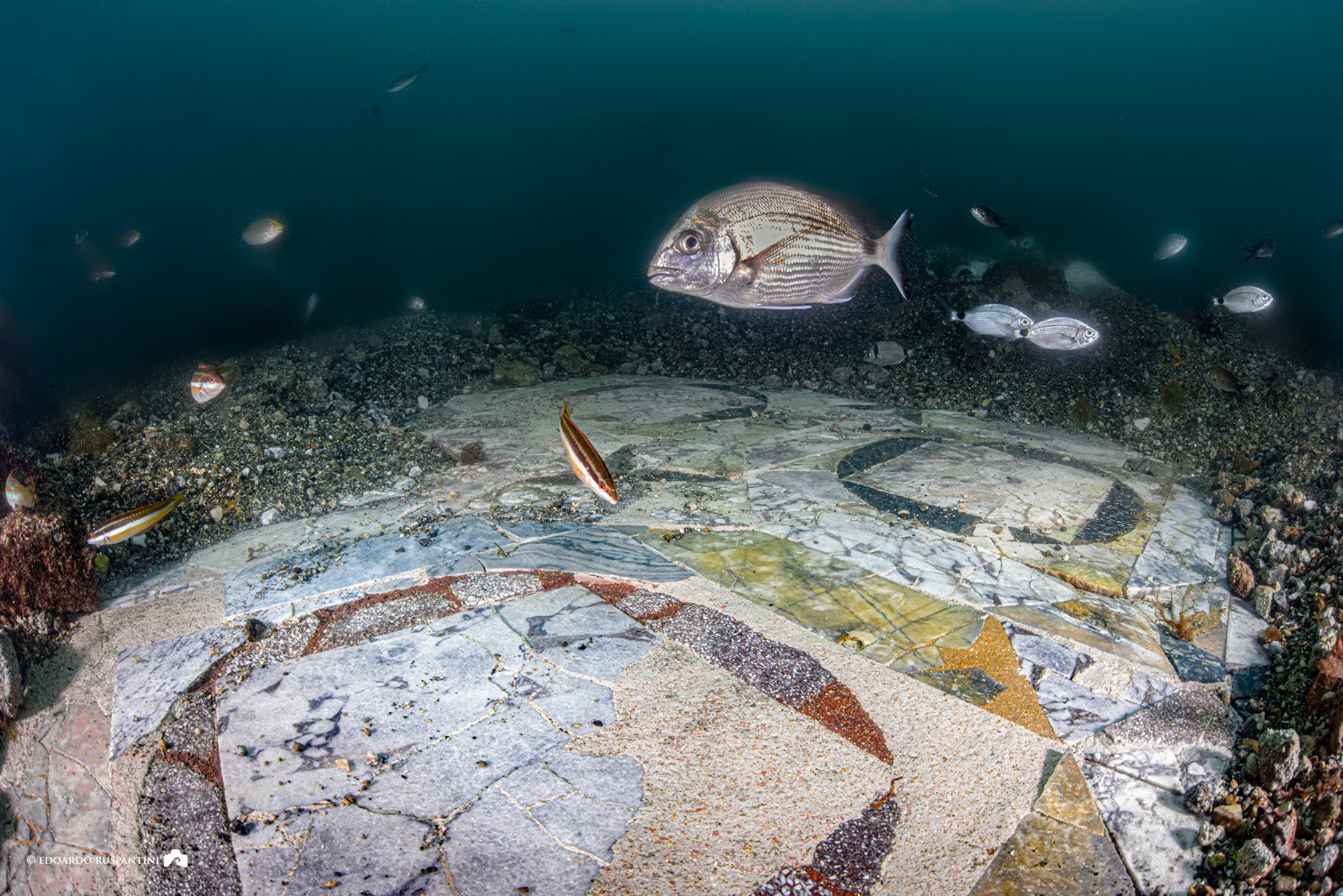
In its day, Baiae was a cloistered seaside getaway for Rome’s elite—and a debaucherous one at that. Home to a villa belonging to Julius Caesar as well as those of emperors Augustus, Nero, and Caligula, it was immortalized by the first century B.C.E. poet Sextus Propertius as “a vortex of luxury” and a “harbor of vice.” It wasn’t until 1940s, however, that Rome’s hedonist mecca was discovered under water in the Gulf of Naples.
Since the late 1950s, marine archaeologists have been scouring the shoreline that descends from the slopes of the Campi Flegrei for treasures of its opulent past. To date, divers have uncovered rooms of marble statuary, giant columns, ancient baths, fishponds, and ornate fountains, many of which have been relocated to a museum adjoining the Underwater Archaeological Park of Baiae.
Diver examining the opus sectile underwater in Baiae. Photo: Edoardo Ruspantini, courtesy of Parco Archeologico Campi Flegrei.
Now, archaeologists have uncovered the intricate marble floor of a Roman villa that comprised the porch entrance overlooking the sea. Unlike mosaicked flooring, such as the one uncovered at a spa last year, the team of divers from CSR Restauro Beni Culturali and Naumacos Underwater Archaeology and Technology located a rarer and more expensive covering: an opus sectile.
The opus sectile. Photo courtesy of Parco Archeologico Campi Flegrei.
While mosaics use small stone squares known as tesserae to create a design, opus sectile demand cutting stones into precise shapes and then forming complicated patterns. The technique encouraged the use of expensive polychrome stones, such as marble, and became increasingly popular beginning in the first century C.E. Notable examples include the Basilica of Junius Bassus in Rome and the flooring of Hadrian’s Villa.
As such, opus sectile was considerably more expensive than regular mosaicked flooring—though in Baiae, archaeologists noted the owner had used recycled materials.
Diver examining the opus sectile underwater in Baiae. Photo: Edoardo Ruspantini, courtesy of Parco Archeologico Campi Flegrei.
One person excited by the discovery was the mayor of Bacoli. “Amazing. This is the magic of Baiae underwater,” Josi Gerardo Della Ragione wrote in a statement. “In the largest underwater archaeological park in the world, this is the opus sectile of a villa’s reception room that was build towards the end of the Roman empire.”
The site was rediscovered by Raimondo Baucher, an Italian air force pilot and diving pioneer, who spotted walls, columns, and roads while flying low over the sea one day. Baucher’s photographs drew great interest, but it wasn’t 1959 and the advancement of scuba diving equipment and marine archaeology that excavations could begin.
The layout of the opus sectile underwater in Baiae. Photo: Edoardo Ruspantini, courtesy of Parco Archeologico Campi Flegrei.
Baiae was lost to the sea between the third and fifth centuries as underground magma chambers caused the surrounding terrain to fall, a process known as bradyseismic activity.
Today, the underwater archaeological park is a major attraction, inviting visitors to dive, snorkel, or boat along prescribed routes and view the submerged Roman city.